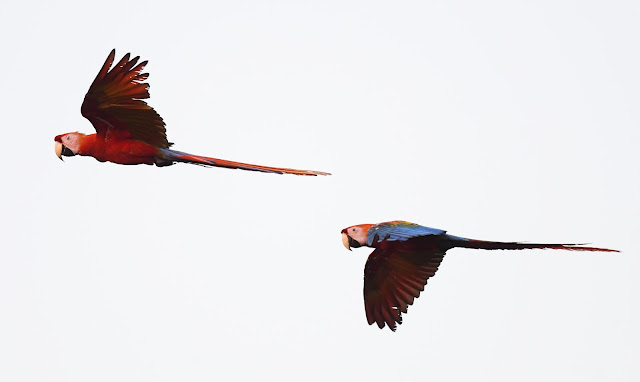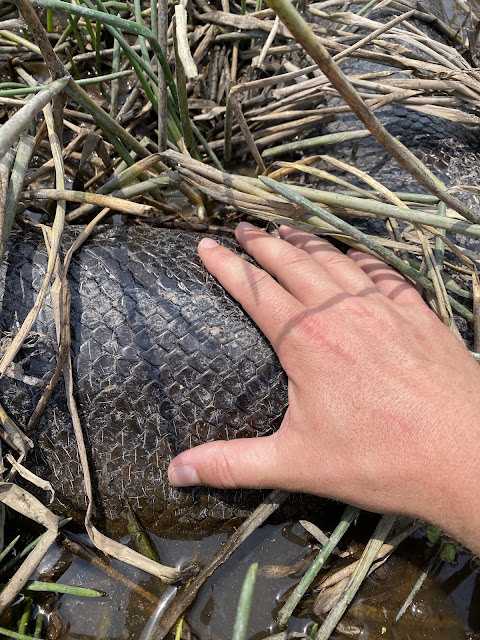The topography of Colombia is dominated by the Andes. While manifested as a single mountain range from Ecuador southwards, the mountains split into three ranges (or cordilleras) near the Colombia/Ecuador border, and these three ranges span the length of Colombia from this southern border towards Venezuela in the northeast. Despite the vast amount of territory contained by these cordilleras (and their associated river valleys), around half of Colombia consists of flat lowlands, especially east of the mountains.
 |
| Burrowing Owls |
In general, this eastern half of Colombia consists of the humid Amazon rainforest to the south and drier plains to the north. These plains (los llanos in Spanish) are productive areas for raising cattle and other livestock, similar to the plains found in parts of Argentina, Paraguay, Uruguay, and Brazil in the south of the continent. Forests are more limited and the land is a mosaic of seasonal wetlands, open savannahs, palm swamps and gallery forest along the productive rivers.


After the conclusion of the main tour, four travellers joined local guide Cris and I for a visit to these eastern plains. We would be staying at Juan Solito Ecolodge, located within a massive ranch called Hato La Aurora. Cattle roam across the landscape, coexisting with the abundant wildlife that thrives in this region. The ecological health of this ranch is relatively high since the cattle are at a low density and all of the original forest cover has been preserved. Jaguars in particular can be found in good numbers while Green Anacondas are frequently observed in the numerous wetlands dotting the property.
 |
| Orinoco Geese |
 |
| Sharp-tailed Ibis |
Our visit would be coinciding with the dry season. While at certain times of the year the wetlands stretch across the landscape, at this time of year they are much reduced in size. This concentrates the many mammals, reptiles and birds that rely on these life-giving wetlands.
 |
| Capybaras (Hydrochoerus hydrochaeris) |
 |
| Scarlet Ibises |
The temperatures are very high here in the lowlands and so we prioritized being out early and late in the day when species are the most active. Dawn in this region is spectacular with nearly every bird being vocal and we typically crossed the 100 species threshold each day by 8 or 9 AM.
 |
| Burnished-buff Tanager |
 |
| Black-crested Antshrike |
 |
| Masked Cardinal |
 |
| Double-striped Thick-knee |
 |
| Nacunda Nighthawk |
Several birds found here are endemic to the plains of northeastern Colombia and western Venezuela, including Pale-headed Jacamar, Venezuelan Troupial, Sharp-tailed Ibis, Crestless Curassow and White-bearded Flycatcher. We succeeded with all of them, with the jacamar, flycatcher and ibis easily found around the lodge!
 |
| Pale-headed Jacamar |
 |
| White-bearded Flycatcher |
 |
| Venezuelan Troupial |
Much of our exploration was done from a safari-style pick-up truck that had two rows of padded seats in the bed and a roof sheltering us from the sun.
 |
| Our truck |
We followed dirt tracks throughout the vast expanses of the ranch, visiting various wetlands and forest habitats. The wetland birds were especially numerous - seven species of ibis, hundreds of White-faced and Black-bellied Whistling-Ducks, herds of Capybaras, innumerable herons, egrets and jacanas, and much more. In our four-night stay we found around 180 bird species.
 |
| Scarlet Macaw |
 |
| Large-billed Tern |
 |
| Capybara (Hydrochoerus hydrochaeris) |
 |
| Roseate Spoonbill |
We kept an eye out for reptiles and encountered quite a few species, including a couple of big targets, figuratively and literally! We found an adult Orinoco Crocodile (along with dozens of Spectacled Caimans). The Orinoco Crocodile is a critically endangered species endemic to this ecoregion, and only a few hundred remain in the wild.
 |
| Orinoco Crocodile (Crocodylus intermedius) |
 |
| Orinoco Crocodile (Crocodylus intermedius) |
The other "big" target was Green Anaconda, and we succeeded with finding three individuals! Most impressive was a huge female, likely over 5 meters in length, that was mating with a much smaller male in a shallow wetland. This was, by far, the biggest snake I had ever seen.
 |
| Green Anaconda (Eunectes murinus) |
 |
| Green Anaconda |
Other reptile highlights included Cryptic Golden Tegu and Savannah Side-necked Turtle.
 |
| Savannah Side-necked Turtle (Podocnemis vogli) |
Though our main target was undoubtedly the Jaguar, I still placed the odds of finding this secretive species fairly low. We had struck out on the previous trip in 2022 and I did not want to get my hopes up. And during our first few days, we had no luck despite spending some time in some of the better areas where they are occasionally seen. Then, one afternoon as we were bumping along a dirt track, our local guide Jovani suddenly shout-whispered "Jaguar! Jaguar!". There, only 50 meters from us, was this absolutely magnificent Jaguar slinking through the grasses. The encounter lasted only around 15 seconds or so but it was unforgettable.
 |
| Jaguar (Panthera onca) |
 |
| Jaguar (Panthera onca) |
The Jaguar was an exciting way to close out an amazing tour extension to the Juan Solito Ecolodge. I hope to return one day!




























2 comments:
Beautiful series of photos, and your blog header is lovely! Thank you so much for sharing, and warm greetings from Montreal, Canada.
Thank you very much!
Post a Comment